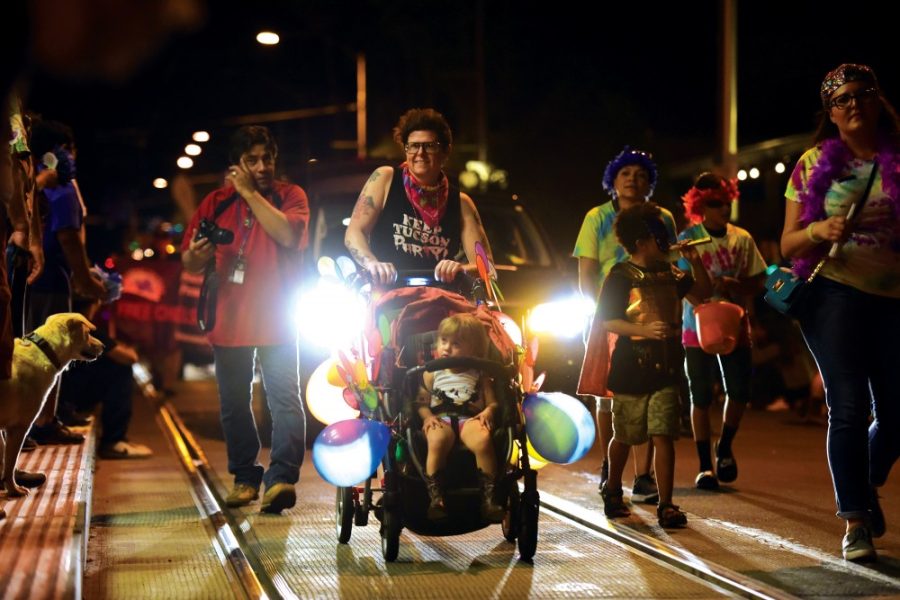Breaking down barriers, the UA LGBTQ Resource Center works towards a safe and accepting society for those involved in the community by celebrating Coming Out Week 2015.
Coming Out Week is dedicated to National Coming Out Day, which was created to raise awareness about the LGBTQ+ community, and is celebrated annually by institutions across the country and the globe.
The UA kicked off this 10-day celebration last Wednesday.
Earlier this year, the LGBTQ community won a battle in the fight for equality with the Supreme Court’s decision to legalize marriage equality. Despite this victory, the LGBTQ community still feels that there are many hurdles to overcome.
One goal of the center is to understand various aspects of the community that are in need of awareness, like mental health, transgender issues, homeless youth, bullying and job discrimination.
A study by The Williams Institute at University of California, Los Angeles, School of Law on LGBTQ rights revealed that in Arizona, only four localities have implemented a law enforcing protection from sexual orientation and gender identity discrimination, leaving 67 percent of the Arizona workforce vulnerable to this discrimination in the workplace.
The UA LGBTQ Resource Center works towards goals to combat these hardships faced in the community.
A major objective of the center is building a sense of community and education, goals they are striving to accomplish through collaboration with other Tucson organizations.
Cole Eskridge, a UA entomology and insect science graduate student and president of Out in Science, Technology, Engineering and Mathematics, an LGBTQ inclusive club for those in the STEM field, explains the disparity between members of the community.
“With the [oSTEM] club, growing up as a queer male, I noticed that there wasn’t enough of LGBTQ individuals in the field,” Eskridge said, “I want people to see examples of LGBT folk in STEM science field so that they don’t feel like they are alone.”
LGBTQ individuals face many problems in STEM research; stereotypes play a large role in how these individuals are perceived and what research they do. The 2-year-old club uses the education of LGBTQ individuals in the STEM field to promote community building and acceptance, Eskridge said.
One major accomplishment for the UA LGBTQ community is the use of preferred names on official documents at the university.
The UA now allows transgender individuals to use their preferred names on school documents, like UAccess, their CatCard and D2L. Also, Residence Life has made efforts to work with the center and create gender inclusive housing on campus, meaning that a transgender student could live with the gender that they identify with.
Additionally, the university has now implemented gender neutral restrooms in all of the new buildings and appropriate healthcare for transgender students at Campus Health Service. However, while transgender students are provided healthcare, the UA’s transgender faculty members are still excluded from university-provided healthcare by a special rider applied to the available insurance plans.
Even with the changes made to laws, it can be difficult for many to change their opinion on the LGBTQ community, said Mary Knudson, student co-director of the LGBTQ Resource Center. Transgender individuals have been harassed on campus for using the restroom they feel comfortable in, and situations where roommates have been disapproving of a community member is not uncommon.
“A lot of it is just feeling unsafe in public spaces,” Knudson said. “It can be very intimidating to be an advocate for the community. In doing that, you can potentially put yourself at great personal risk.”
Those at the Resource Center understand that breaking social opinions can be difficult; because of that, they have implemented the Safe Zone training program. Safe Zone is an approximately three hour workshop that serves as a crash-course in educating employees about the LGBTQ community.
The program is open and free to everyone, and is available every few weeks at the center.
“Progression on the local level, while not all of the communities have become this way, we now have a lot more space to be safe,” Knudson said. “Now that people know we are here, we are a little more free to create our own space. They have allowed us to explore and fight for what we need to fight for.”
Follow Lauren Renteria on Twitter.








